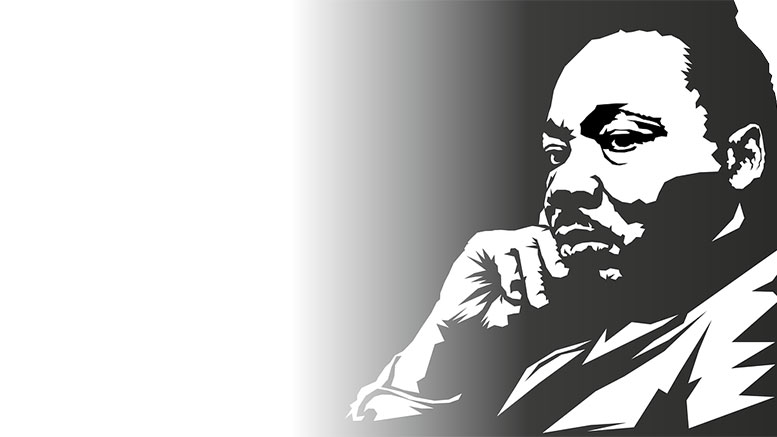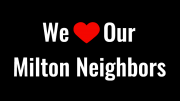Moving beyond “I Have a Dream”
Reverend Dr. Martin Luther King’s “I Have a Dream” is without question one of the most iconic speeches in the history of the world. It is a beautifully written, brilliantly structured, and powerfully delivered piece of rhetoric that is seared in the public imagination. Vaunted as the enduring symbol of an entire era, “I Have a Dream” hits all of the high notes. He cites the Emancipation Proclamation and the Declaration of Independence, inserting the groundbreaking 1963 March on Washington into a longer narrative about the pursuit of freedom and advance of democracy in the United States. King’s poetic use of language deploys metaphors, similes, and other figures of speech that both dazzle and instruct. “But we refuse to believe that the bank of justice is bankrupt,” he states, laying claim to his rightful inheritance as a citizen. In its repetition of “the dream,” the speech concludes with a motif that is both visionary and prophetic inviting his listeners to imagine a different, and better world.
But today, our narrow focus on this speech and King’s dream to the exclusion of other causes he stood for, prevents us from appreciating and implementing the capaciousness of King’s vision.
What do we lose when we only emphasize the dream? And more practically, how do we move beyond the dream? I offer the suggestions below based on experience from my own research, writing, teaching, and advocacy.
First, we can embrace the radical Dr. King by examining his later works. For example, in the fall of 1967, the Canadian Broadcasting Corporation asked him to present a series of lectures on topics of his own choosing. The product was “The Trumpet of Conscience,” in which he discusses economic injustice, international human rights, and his opposition to the Vietnam War. Alternately described as “King’s Call to Peace,” these lectures decry the “triple American evils of racism, materialism and militarism.” King’s attention to economic injustice and labor organizing is often overlooked today. Moving beyond the dream requires that we take up the cause of income inequality in our social justice work. It means remembering that King called for “a true revolution of values [that looks] uneasily on the glaring contrast between poverty and wealth.” One place to begin might be Reverend William Barber’s Poor People’s Campaign which extends King’s vision to end poverty.
We can also move beyond the dream by taking seriously the questions that King poses in his later work and allowing them to inspire our activism. On the day before he died, he delivered a speech entitled “I’ve Been to the Mountaintop,” given in support of striking sanitation workers in Tennessee. In it her recounts the story of “The Good Samaritan.” He said that those who refused to stop for the wounded man on the road asked, “If I stop to help this man, what will happen to me?”—but the Samaritan instead asked, “If I do not stop to help this man, what will happen to him?” Today, we should also ask questions like these: If I do not stop to help the Haitian refugees, what will happen to them? If I do not stop to help families separated at the border, what will happen to them? If I do not stop to help people afflicted by food insecurity or housing insecurity, what will happen to them? If I do not stop to help survivors of rape and sexual abuse, what will happen to them? If I do not stop to help victims of racist and homophobic violence, what will happen to them?
Finally, to move beyond the dream, we can recognize and celebrate that King had many collaborators who made the movement possible. In his acceptance speech for the Nobel Prize, King referred to “the many people who make a successful journey possible, the known pilots and the unknown ground crew.” These are people like the great Ella Baker. Explaining her role in the founding of the Student Non-Violent Coordinating Committee, she said: “You didn’t see me on television, you didn’t see news stories about me. The kind of role that I tried to play was to pick up pieces or put together pieces out of which I hoped organization might come.” When we take the time to consider other, relatively marginal figures of the Civil Rights movement, a different model of social justice work emerges that is collective and communal. This collective vision acknowledges the many actors involved in the Black freedom movement. Rather than concentrate on one speech or one figure, we must understand that the movement is an ocean, just as the late activist and educator Bob Moses described it in 1986:
“Consider that the movement is an ocean of consciousness, protest, rebellion, organizing — fill in other things that the movement is an ocean of — and that the people in the movement are the waves on that ocean… Let us shift our attention from the wave to the ocean, because the wave is not the ocean. Even if it’s a tidal wave, it has no meaning apart from that ocean.”
Similarly, “I Have a Dream” is but one wave (albeit truly exquisite) in a vast ocean of thought, collective action, coalition building, and collaborative work that marked the Civil Rights movement. As we honor King’s legacy, may we dive deeper into the ocean not only by learning but also by doing the work to build a better world.
About the author:
Contributed by Dr. Régine Michelle Jean-Charles
Dr. Régine Michelle Jean-Charles is a Milton resident, Director of Africana Studies, and Dean’s Professor of Culture and Social Justice at Northeastern University. She is the author of, most recently, The Trumpet of Conscience Today (Orbis Press, 2021) on which this piece is based.
Dr. Jean-Charles will be keynote speaker at MICA’s annual celebration on Monday, January 17th, at 6:30 pm and will be giving a book talk on Wednesday, January 19 at 7:00 p.m. at the Milton Library.







Be the first to comment on "Moving beyond “I Have a Dream”"